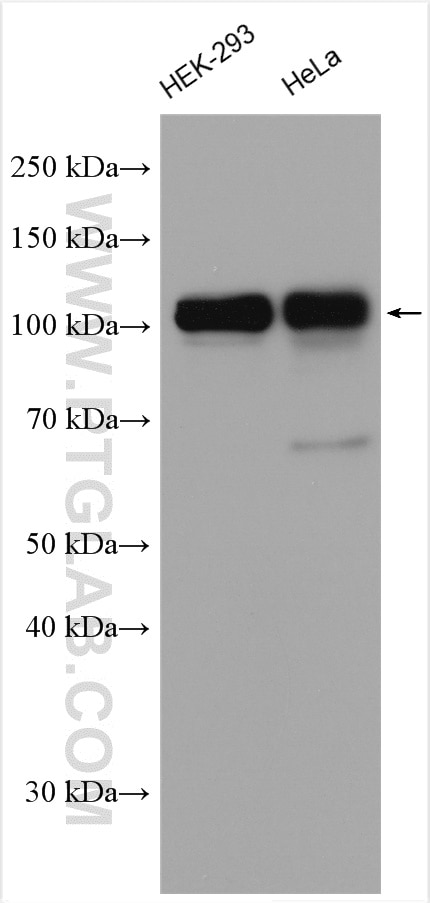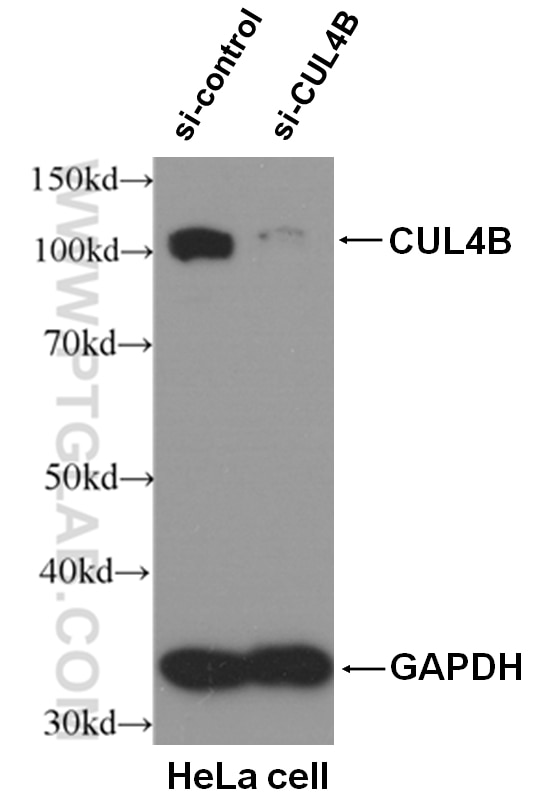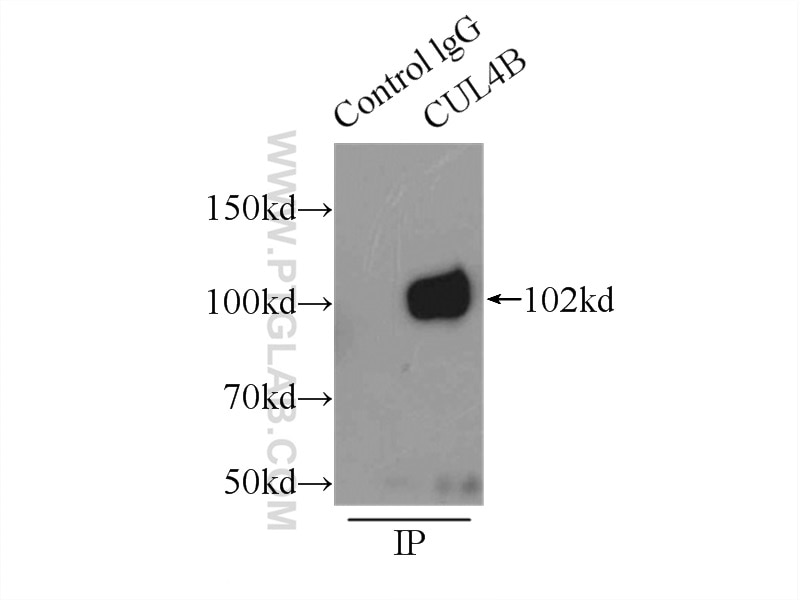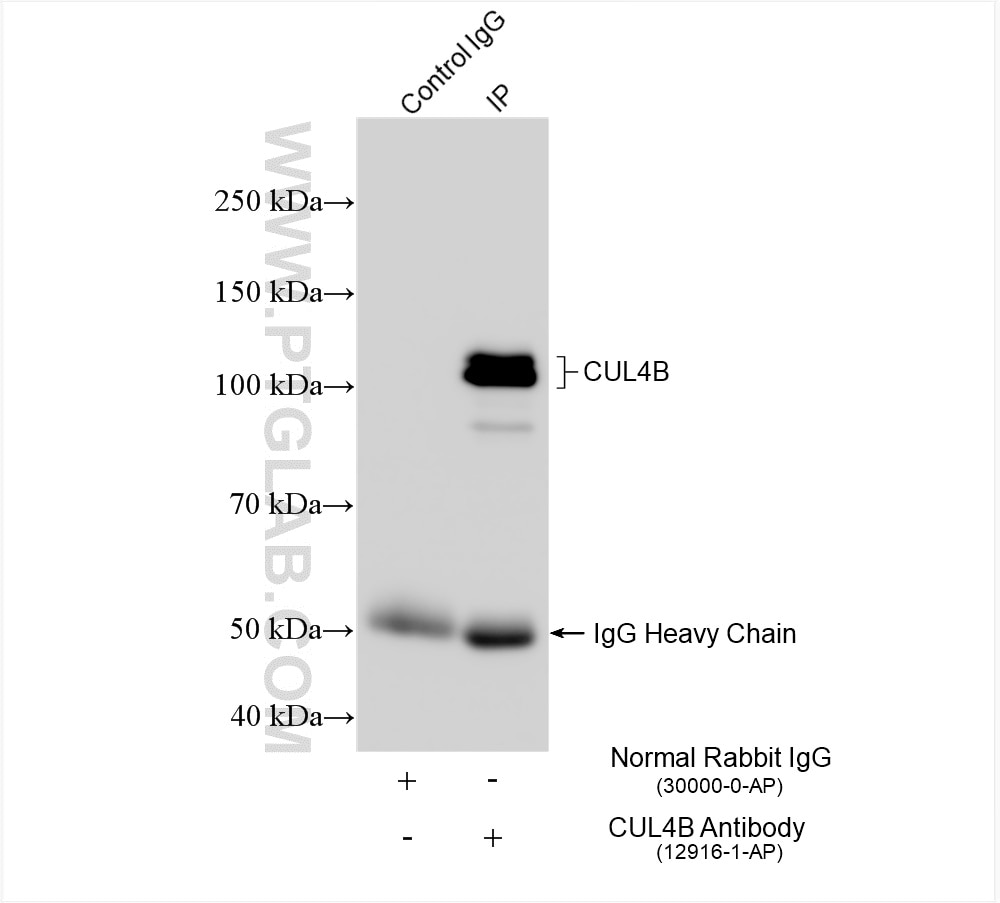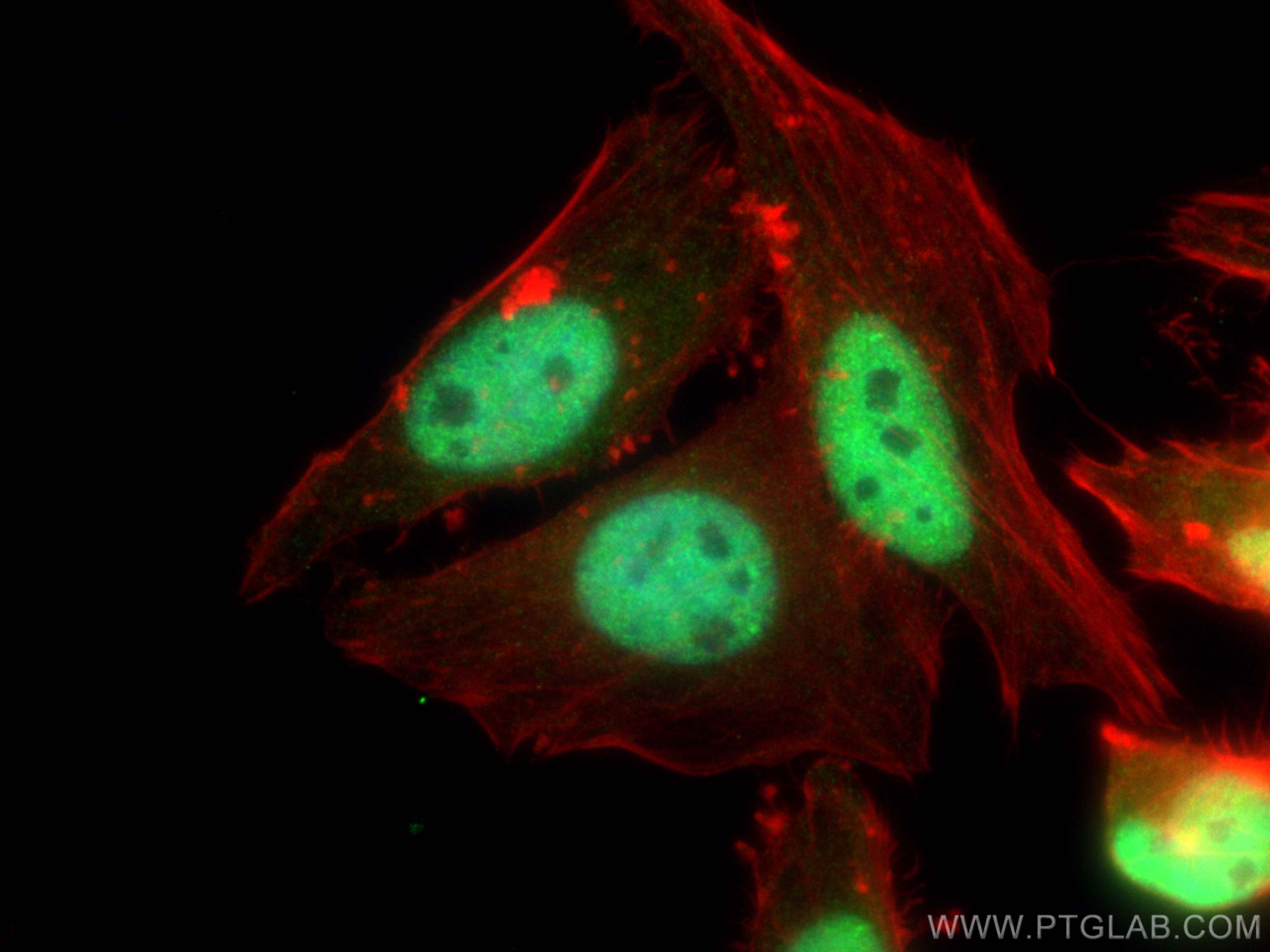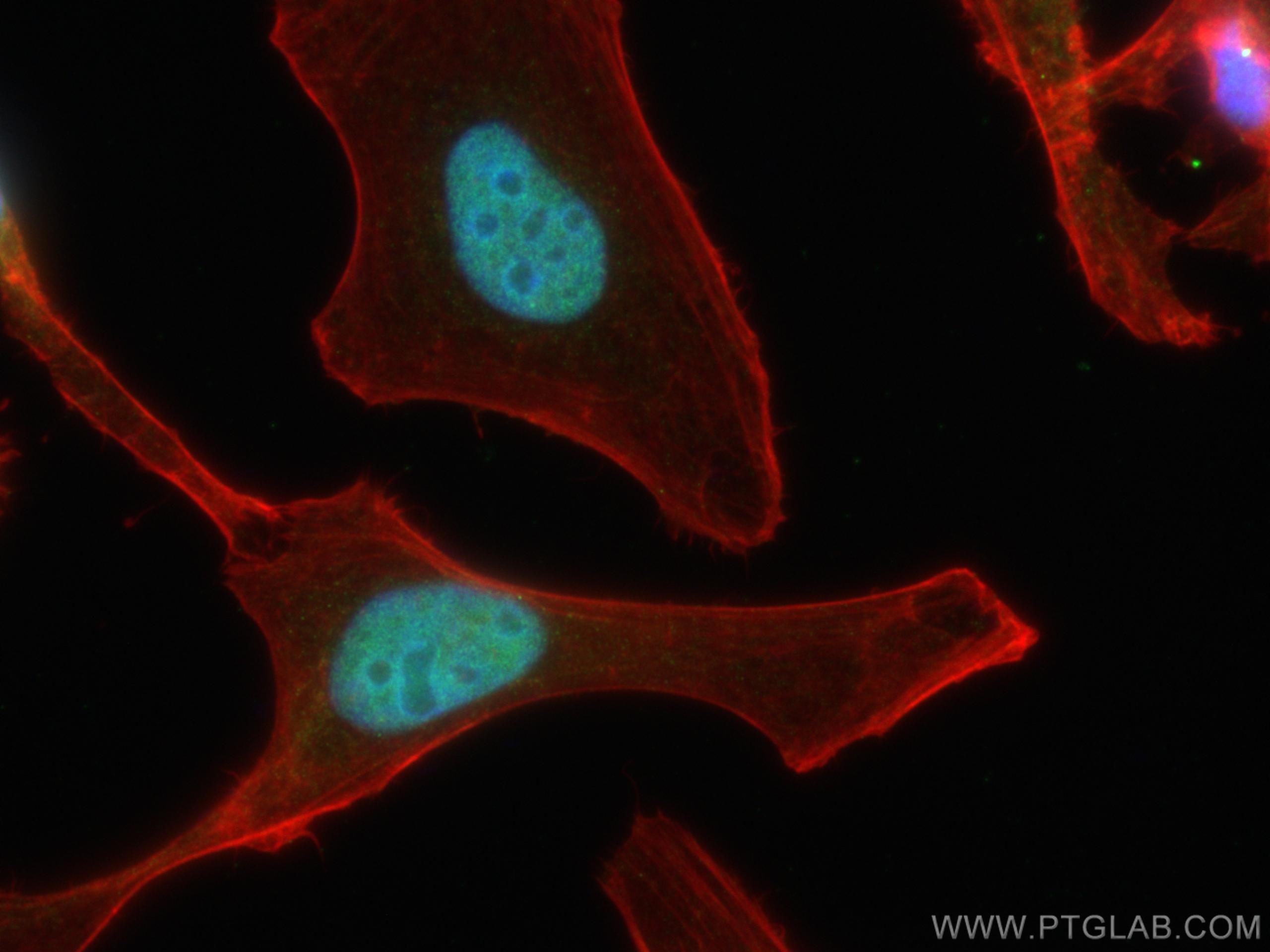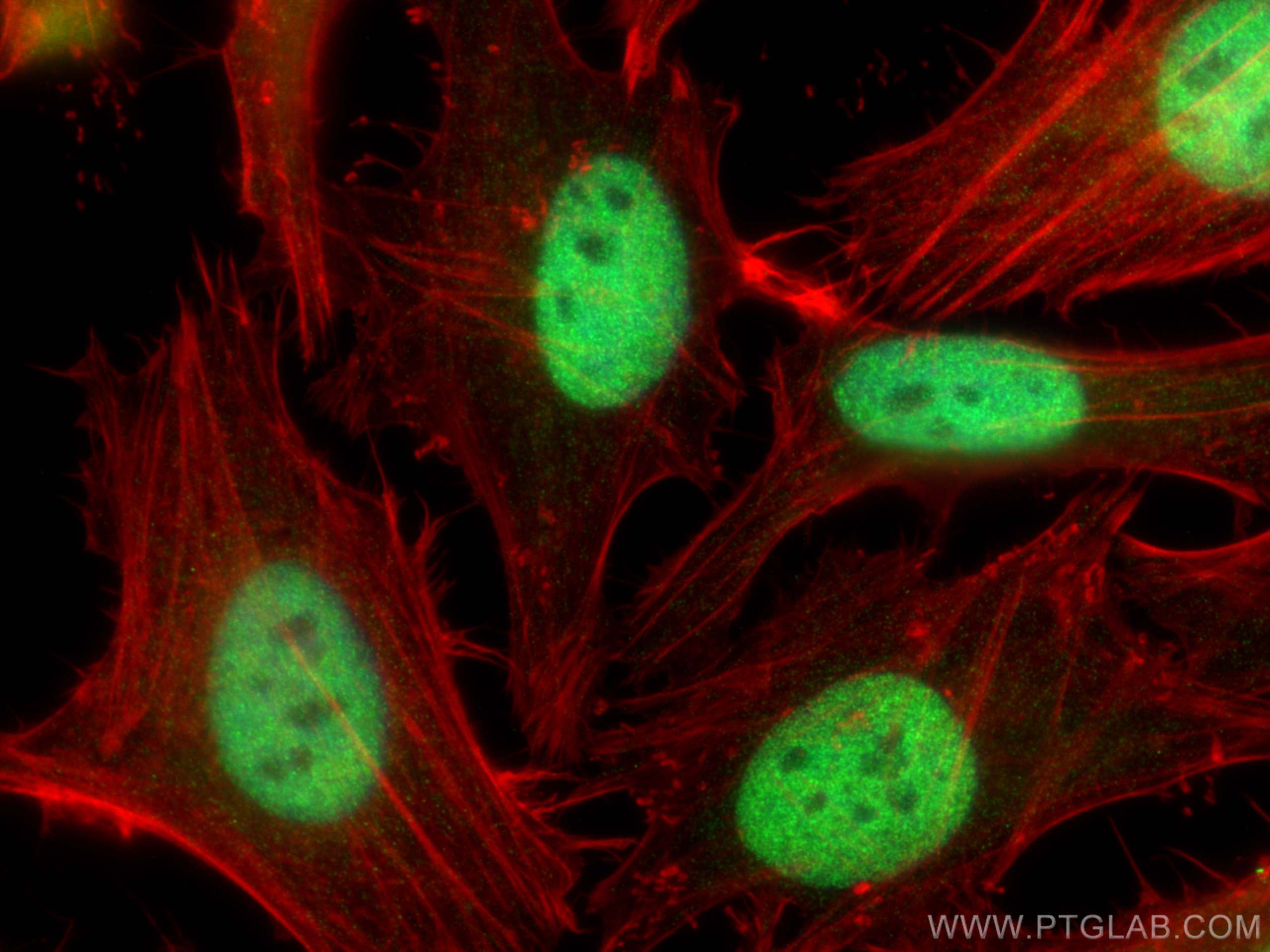- Phare
- Validé par KD/KO
Anticorps Polyclonal de lapin anti-CUL4B
CUL4B Polyclonal Antibody for WB, IF/ICC, IP, ELISA
Hôte / Isotype
Lapin / IgG
Réactivité testée
Humain, souris et plus (2)
Applications
WB, IHC, IF/ICC, IP, CoIP, RIP, ELISA
Conjugaison
Non conjugué
N° de cat : 12916-1-AP
Synonymes
Galerie de données de validation
Applications testées
| Résultats positifs en WB | cellules HEK-293, cellules HeLa |
| Résultats positifs en IP | cellules HeLa, |
| Résultats positifs en IF/ICC | cellules HeLa, |
Dilution recommandée
| Application | Dilution |
|---|---|
| Western Blot (WB) | WB : 1:1000-1:6000 |
| Immunoprécipitation (IP) | IP : 0.5-4.0 ug for 1.0-3.0 mg of total protein lysate |
| Immunofluorescence (IF)/ICC | IF/ICC : 1:500-1:2000 |
| It is recommended that this reagent should be titrated in each testing system to obtain optimal results. | |
| Sample-dependent, check data in validation data gallery | |
Informations sur le produit
12916-1-AP cible CUL4B dans les applications de WB, IHC, IF/ICC, IP, CoIP, RIP, ELISA et montre une réactivité avec des échantillons Humain, souris
| Réactivité | Humain, souris |
| Réactivité citée | rat, canin, Humain, souris |
| Hôte / Isotype | Lapin / IgG |
| Clonalité | Polyclonal |
| Type | Anticorps |
| Immunogène | CUL4B Protéine recombinante Ag3563 |
| Nom complet | cullin 4B |
| Masse moléculaire calculée | 913 aa, 104 kDa |
| Poids moléculaire observé | 102 kDa |
| Numéro d’acquisition GenBank | BC036216 |
| Symbole du gène | CUL4B |
| Identification du gène (NCBI) | 8450 |
| Conjugaison | Non conjugué |
| Forme | Liquide |
| Méthode de purification | Purification par affinité contre l'antigène |
| Tampon de stockage | PBS with 0.02% sodium azide and 50% glycerol |
| Conditions de stockage | Stocker à -20°C. Stable pendant un an après l'expédition. L'aliquotage n'est pas nécessaire pour le stockage à -20oC Les 20ul contiennent 0,1% de BSA. |
Informations générales
Cullin-RING ligases (CRLs) complexes participate in the regulation of diverse cellular processes, including cell cycle progression, transcription, signal transduction and development (PMID: 21816341)(PMID: 21554755). Serving as the scaffold protein, cullins are crucial for the assembly of ligase complexes, which recognize and target various substrates for proteosomal degradation. Two cullin 4 (CUL4) proteins, CUL4A (87 kDa) and CUL4B(104 kDa), are two members in cullin family with 83% of identity. Mutations in human CUL4B are one of the major causes of X-linked mental retardation. Cul4b knockout mice demonstrated that CUL4B is indispensable for embryonic development in the mouse (PMID: 22606329). This antibody may detect both CUL4A (87 kDa) and CUL4B(104 kDa).
Protocole
| Product Specific Protocols | |
|---|---|
| WB protocol for CUL4B antibody 12916-1-AP | Download protocol |
| IF protocol for CUL4B antibody 12916-1-AP | Download protocol |
| IP protocol for CUL4B antibody 12916-1-AP | Download protocol |
| Standard Protocols | |
|---|---|
| Click here to view our Standard Protocols |
Publications
| Species | Application | Title |
|---|---|---|
Cell FBXO44 promotes DNA replication-coupled repetitive element silencing in cancer cells.
| ||
Cell Systematic discovery of mutation-directed neo-protein-protein interactions in cancer. | ||
Science CRL4 complex regulates mammalian oocyte survival and reprogramming by activation of TET proteins. | ||
Nat Med Immunomodulatory drugs disrupt the cereblon-CD147-MCT1 axis to exert antitumor activity and teratogenicity.
| ||
Science Anticancer sulfonamides target splicing by inducing RBM39 degradation via recruitment to DCAF15. |
